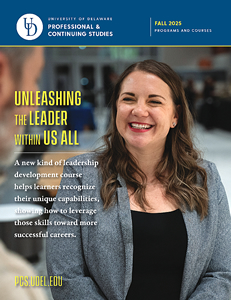Apply human-centered techniques to solve problems in creative and innovative ways
| AVAILABLE FOR GROUP OR ORGANIZATIONAL OFFERINGS — This program is available as a customized training program for groups or organizations, click here for details. |
- Valuable for individuals or any organization looking to reskill or provide professional development for its employees
- Applicable to numerous industries
- Hands-on style, applying lessons to a real-life challenge
- Two-day workshop
User experience (UX) touches everything. People embrace solutions that reduce their friction of achieving their desired goals. But how do we deliver products and services that provide these memorable and dazzling experiences? In this training, you will learn how to gauge existing problems and experiences via customer immersion, journey and empathy maps, and behavioral economics in order to understand real challenges and create solutions together with the people they are meant for.
Design thinking is a foundation of innovative products and memorable UX. It is an iterative process in which we seek to understand the problem, get to know the user, challenge assumptions and redefine problems in an attempt to identify alternative strategies and solutions that might not be instantly apparent with our initial level of understanding. At the same time, design thinking provides a solution-based approach to solving problems by embracing creativity techniques, customer co-creation and experimental design. It is a way of thinking and working as well as a collection of hands-on methods. With design thinking, we not only solve for unmet customer needs, but we also develop a keen sense of identifying unknown needs through insights development and strategic problem reframing.
Immerse yourself in the value of design thinking with this two-day workshop that covers the framework, the mindsets and proven techniques you can use to achieve superior solutions to the problems of your business. Gain hands-on experience with the tools and templates via a real design thinking challenge that focuses on a common user experience problem. This training is meant for aspiring design thinkers, UX designers, product managers, design strategists and innovators, as well as existing practitioners and executives seeking to incorporate design and human-centricity into company strategy in order to optimize customers’ and employees’ experiences with their company/products/services/brands. Organizations purchasing seats for a group are encouraged to have the participants bring a real-life challenge they would like to solve to the class.
The program can also be presented via customized training on-site at your location, at the University of Delaware or live-online. Please contact UD PCS to discuss pricing and scheduling options.
Program details
Who should participate in this program?
- Executives
- Innovators
- UX practitioners
- Product managers
- Business analysts
- Customer experience leaders
- IT and solution designers
- Marketing managers
- Sales managers
- Business managers
- Startup owners
Instructor
Adam Radziszewski is a dynamic, results-driven innovation leader with extensive experience in enterprise innovation practice building and fostering creative and collaborative organizational cultures. Radziszewski delivers innovation and design thinking workshops globally and applies design thinking and creativity to solve clients’ business problems resulting in product, service and business model innovations. Prior to his innovation and design roles, he held positions in software development, business analysis, and project and product management. As an entrepreneur, Radziszewski co-established two startups, including the first virtual reality entertainment center on the East Coast.
As part of his innovation consulting firm, InsightsGen.com, Radziszewski has been leading the growth of the design thinking and innovation strategy across a diverse market of industry leaders in technology, insurance, pharma and beauty.
Radziszewski holds a bachelor of science degree in computer science from Rutgers University, a master of science in computer science from Binghamton University, an MBA from Walden University and an innovation and entrepreneurship business graduate certificate from Stanford University. He also holds certificates from Stanford, IDEO, Luma Institute, Strategyzer and Irrational Labs.
Course outline
- Learn from expert practitioners
- Design thinking framework
- User research
- Creativity and prototyping
- Methods and tools
- Templates
- Exercises and practice (solving real-life challenge)
- Case studies
- Free reusable creativity and ideation resources
- Next steps to successfully leverage design thinking in your organization
Day 1
- Introduction
- Warmup/Stoking
- Design Thinking Definition and IDEO Framework
- Design Thinking Stages Overview
- Wicked Problems, Needs vs. Solutions
- Traditional vs. DT approach, why is DT becoming so popular now?
- Design Thinking, a Framework for Innovation
- Design Thinking and Agility
- Design Principles, Design Thinking Mindset
- Stage 1: Research and Observation
- Design Brief
- Stage 1 Tools:
- Quantitative Methods – Surveys, Statistics
- Qualitative Methods – User Interviews, 5Whys and So What, Immersion, Analogous Empathy
- Persona Definition, Extreme Users, Job to Be Done (JTBD)
- Journey and Empathy Maps
- Day 1 Summary
Day 2
- Day 1 Recap
- Warmup
- Stage 2: Unpacking, Sensemaking and Insights
- Stage 2 Tools:
- Context Maps, Mind Maps, Key Assumptions
- Point of View, Challenge (“How might we … “)
- Design Brief
- Stage 3: Ideation and Selection
- Stage 3 Tools:
- Creativity Frameworks – You are the Product, Reversal/Revolution, Random Stimuli, Related Areas, SCAMPER, Affinity
- Maps, 6-3-5 Brainwriting
- Creativity Cards
- Stage 4: From Ideas to Experiments to Prototypes
- Stage 4: Concept Prototyping
- Stage 4 Tools:
- Storytelling and Storyboarding
- Concept Poster, Wizard-of-Oz
- Application Prototyping
- Stage 5: User Feedback and Improving User Experience
- Stage 5 Tools:
- Feedback Capture Grid, I Like and I Wish
- Business Model Canvas and Value Proposition Canvas
- Behavioral Economics Intro
- Day 2 Summary
- Next Steps for Innovation and Disruption in Your Organization



